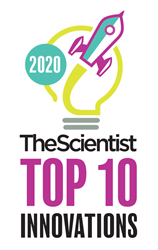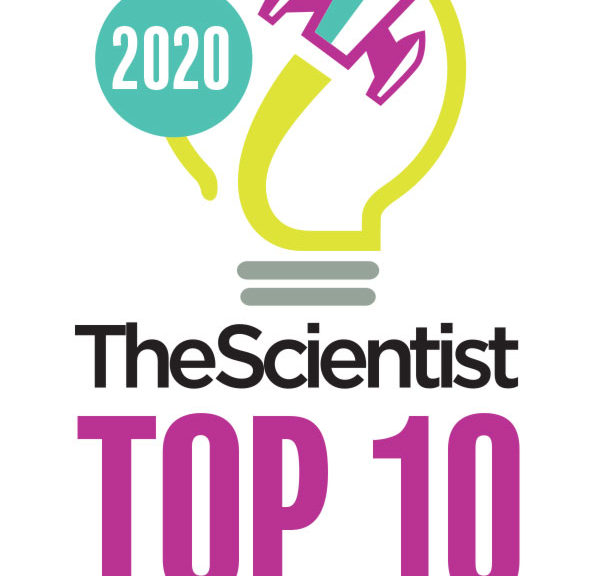
WILMINGTON, Del. (PRWEB)
December 01, 2020
Each year The Scientist strives to identify the latest and greatest tools, technologies, and techniques to hit the life science landscape. For more than a decade, our expert panels of independent judges have weighed submissions of innovative products speeding work in laboratories and facilitating biological discovery. This year’s crop of entries to The Scientist’s Top 10 Innovations contest reflected the fact that the scientific community, like the whole of society, faced a once-in-a-lifetime challenge in the form of a global infectious disease pandemic. “The COVID-19 pandemic birthed a shared scientific purpose and accelerated innovation in 2020,” says Editor-in-Chief Bob Grant. “The winners of this year’s competition embody the spirit of togetherness and ingenuity marshalled by the research community in the face of this unprecedented challenge.”
The winners of The Scientist’s Top 10 Innovations of 2020 contest are:
1) CeliumTM (AbCellera) – This AI-powered data visualization tool can rapidly sift through genetic data to identify antibodies that might work best as potential therapies for various diseases, such as COVID-19.
2) ID NOW COVID-19 Test (Abbott) – This toaster-size device can detect RNA from the SARS-CoV-2 virus, reporting results in less than 15 minutes.
3) TotalSeqTM-C Human Universal Cocktail v1.0 (BioLegend) – Comprising a collection of 130 oligo-linked antibodies for massive screening of the cell-surface proteins of individual cells, this tool is designed for use on a single-cell sequencing platform.
3) GRAFTM (Seven Bridges) – This genomic analysis platform attempts to include all possible iterations of genetic sequences at any given locus, with the goal of capturing more variations and boosting the presence of underrepresented groups in genomic research.
4) TESSA (OXGENE) – This research-grade viral vector aims to improve the efficiency of making adeno-associated virus (AAV) for potential use in gene therapies.
5) BioXpTM 3250 System (Codex DNA) – With this desktop gene synthesizer, researchers can assemble DNA sequences of up to 7,000 base pairs long with the push of a button.
6) Single-Cell Intracellular Proteome (IsoPlexis) – This system uses innovative microfluidics to monitor 30 or more protein pathways at the level of single cells.
7) Surge (GigaGen) – This platform helps researchers tease apart the intricacies of the immune system by using single-cell sequencing to capture and recreate libraries of antibodies from blood donors, including people who have recovered from COVID-19.
8) Chromium Single Cell Multiome ATAC + Gene Expression (10X Genomics) – With the goal of opening a window onto cellular functionality, this platform simultaneously profiles the epigenome and transcriptome of single cells.
9) Visium Spatial Gene Expression Solution (10X Genomics) – This technology exposes 55-micrometer areas at 5,000 locations within a tissue sample to mRNA-binding oligonucleotides, and overlays the resulting gene expression data with histological images, yielding high-resolution gene expression data.
9) OnyxTM Digital Genome Engineering Platform (Inscripta, Inc.) – This benchtop device makes CRISPR scalable and high-throughput using fully automated genome-engineered libraries with hundreds of thousands of single edits in microbial genomes.
10) SLIM (MOBILion) – This instrument brings ion mobility separations to the next level, packing a 13-meter ion path length in a device the size of a briefcase, enabling higher resolution, faster analysis, and simpler workflows in characterizing biologic therapeutics, biomarker discovery, and clinical diagnostics.
Congratulations to this year’s winners. Be sure to visit https://the-scientist.com/features/2020-top-10-innovations-68176 where you can read more about the products that earned top spots and see comments from our expert judges.
About The Scientist:
The Scientist is a publication for life science professionals that is dedicated to covering a wide range of biological fields. The Scientist provides print and online coverage of the latest developments in the life sciences, including trends in research, new technology, news, business, and careers. It is read by the science-curious public and leading researchers in industry and academia who value penetrating analyses and broad perspectives on life science topics both within and beyond their areas of expertise. Written by prominent scientists and professional journalists, articles in The Scientist are concise, accurate, accessible, and entertaining.
Share article on social media or email:

